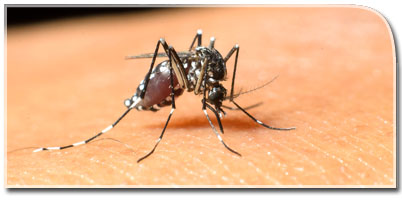Aerial Spraying: Is it the Right Solution?
With mosquito borne illness on the rise and locally transmitted cases of Zika making headlines daily, people are naturally concerned about local vector control. In the fight against mosquitoes and the diseases they carry, local governments are feeling the pressure to formulate plans to keep their residents protected, especially in areas where Zika has been detected. For this reason, as the need to reduce the mosquito population and the spread of vector borne illness intensifies, aerial spraying is something that could be making headlines in your area.
What is Aerial Spraying?
Aerial spraying is the use of airplanes to treat large areas with insecticides as safely, quickly, and efficiently as possible. These products (which may vary by area) rapidly reduce both young and adult mosquitoes and can help to reduce the number of mosquitoes that carry the Zika virus and other mosquito borne illnesses.
A typical aerial-spraying program involves loading a solution of the insecticide and mineral oil in tanks. Nozzles create droplets that can get past the crowns of trees to hit the mosquitoes and areas where they live. Planes fly 100 to 300 feet above the ground.
Benefits of Aerial Spraying
- Aerial spraying does not pose a health risk to humans, pets or wildlife when done correctly. During aerial spraying, a small amount of insecticide is sprayed over an area, usually about 1 ounce per acre or about the size of a football field.
- Products that are being used are EPA registered. The EPA registration tells you that the product has demonstrated that it should not cause adverse effects on your health or the environment when used according to label instructions.
- While it is only part of the solution for controlling mosquitoes, aerial spraying is a method that can quickly reduce the number of mosquitoes in a large area.
Challenges of Aerial Spraying
- Weather conditions. There has to be ideal weather conditions for the planes and the product to be applied accurately. This can sometimes cause delays in treatment or directly impact its effectiveness.
- Mass, less targeted approach. Unlike Mosquito Joe mosquito control treatments that are directly tailored to each individual property, aerial spraying is a mass approach to mosquito elimination with no room for customization. It’s a one size fits all solution.
- The risk to beneficial insects. While the product can’t differentiate between insects that do important work and the ones that can make life difficult for us, there are ways that aerial spraying can be done to minimize the risk to beneficial insects. For example, spraying should be done during the time honeybees are inside their hives (dawn and dusk) to avoid adverse effects to the bee population.
- Communication and timing. The general public has no control over when aerial spraying is done, and as with any situation when there is a need to get information to a large amount of people, it is hard for local agencies to get the word out about plans for spraying. Most agencies will mention it in the news and place it in the newspaper, but unfortunately that word doesn’t reach everyone. If the communication doesn’t reach you, you might not be able to prepare. While most people don’t need to do anything to prepare, for some, like beekeepers, that information could be vital.
Alternative Options to Aerial Spraying
Regardless of whether or not aerial spraying is part of your city’s plans, there are plenty of actions you can take to help protect your family from mosquito bites:
- Reduce standing water. Reducing sources of standing water in and around your yard can help eliminate breeding areas for mosquitoes.
- Cover yourself. Mosquitoes feed at dawn and dusk, so if you’re going to be outdoors make sure you are in long sleeves and pants to avoid bites.
- Professional mosquito control. Services like Mosquito Joe’s barrier spray treatments can keep your yard itch free, on your terms. These treatments are applied on a regular basis (every 2-3 weeks) and tailored to your yard, offering ongoing protection for your outdoor space.
Aerial spraying is one example of how municipalities are joining the fight against mosquito-borne illness by reducing the mosquito population. We encourage you to stay educated on what’s going on in your community and ensure you have an adequate defense plan of your own for mosquito control around your home.
More information on Zika or other mosquito-borne illnesses can be found Centers for Disease Control and Prevention website. For more information on professional mosquito control options or to get a quote for a service plan for your home, check out MosquitoJoe.com.
 Outside is fun again.
Outside is fun again.
